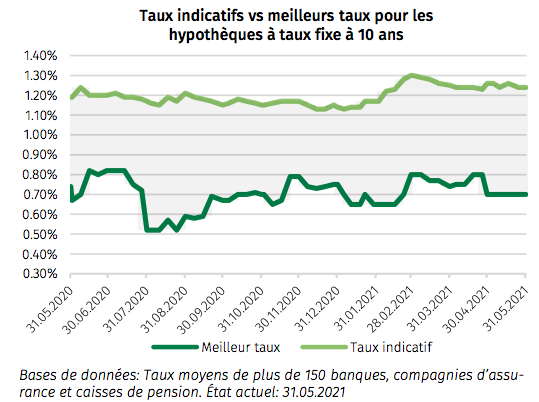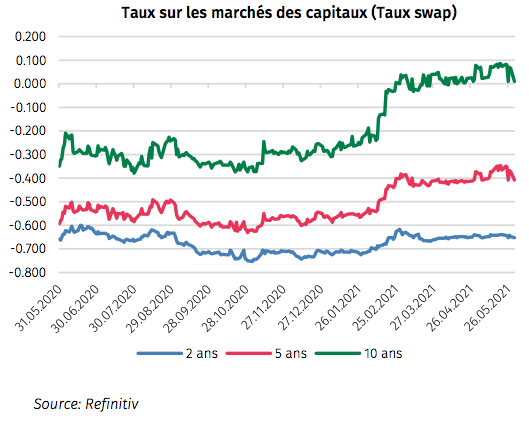MoneyPark presents its full mortgage rate assessment for the month of June.
Macroeconomic situation
According to sea freight data analyzed by IMF economists, for several weeks, exports from Asia, euro-zone countries and the United States have largely exceeded pre-crisis levels. Additionally, air movements, which had stagnated at around 60% of the pre-pandemic level since last summer, have increased to over 70% in recent weeks. This upward trend is expected to continue in the coming months, thanks to the progress of vaccination.
Currently, the United States is showing signs of an economic boom. Private consumption has picked up sharply in recent weeks and is well above pre-crisis levels. In addition, the situation on the American labor market has improved markedly. Due to the extension of the partial closures, German GDP fell by 1.7% in the first quarter of 2021. German industry has, however, shown solid business performance in recent weeks.
As the real-time data show, after the significant catch-up consumption linked to the opening of stores in March, purchasing behavior has returned to normal in Switzerland since April and is now at the level of the previous year. The export industry continues to show excellent performance. It is benefiting from sustained demand in Asia and an economic boom in the United States. According to the SECO indicator, in March and April, Swiss GDP exceeded pre-crisis levels for the first time since the start of the pandemic. A slight weakening was nevertheless recorded in May.
Evolution of interest rates
Indicative rates (the average mortgage rates of more than 150 providers) for all maturities edged down again in May – especially for short-term maturities. This means that the spread between short and long term interest rates is slowly continuing to widen. Since 2019, when the lowest rate on record was observed, the spread has remained small.
The best rate for the 5-year fixed-rate mortgage fell a further four basis points, while offers for other maturities remained stable from the previous month. This means that the range between the indicative rate and the best rate also remains wide: through good negotiation it is possible to save a few basis points.

Swap rates were very volatile in May, especially for long-term maturities. Speculation in the market caused rapid and significant fluctuations. In one month, the 10-year rate fell 7 basis points to 0.01%, while the 5-year rate fell 2 basis points to -0.41%.

Forecast of interest rate development
Short-term fixed rate mortgages have fallen again, while long-term fixed rate mortgages have remained stable in recent months. This development marks a return to normal for the yield curve, with higher mortgage rates for long maturities than for short maturities.
The main economic indicators do not point to any lasting inflation that would lead to a hike in key rates in the near future. Some volatility is expected, but mortgage interest rates should mostly stagnate and follow the trend of capital market rates. In addition, competition and pressure on mortgage providers have a significant influence on this development.
Recommendations
Short-term fixed-rate mortgage interest rates have been falling steadily in recent weeks. Most providers now offer them at significantly lower rates than a Saron mortgage. In this context, long-term mortgages are recommended. However, if you want to be flexible, for example due to amortization or the sale of a property, a short-term fixed rate mortgage can be considered instead of a Saron mortgage, which has a contract term of often longer.
Due to the expected volatility, it is particularly important to monitor developments in the capital and mortgage markets in a timely manner and to seize any short-term opportunities.
–

;Resize=(1200,627)&hash=517b6a2a4636f1e2a89f9a040acbb5ffb01e1b679c122f35d7174d75e390c559)